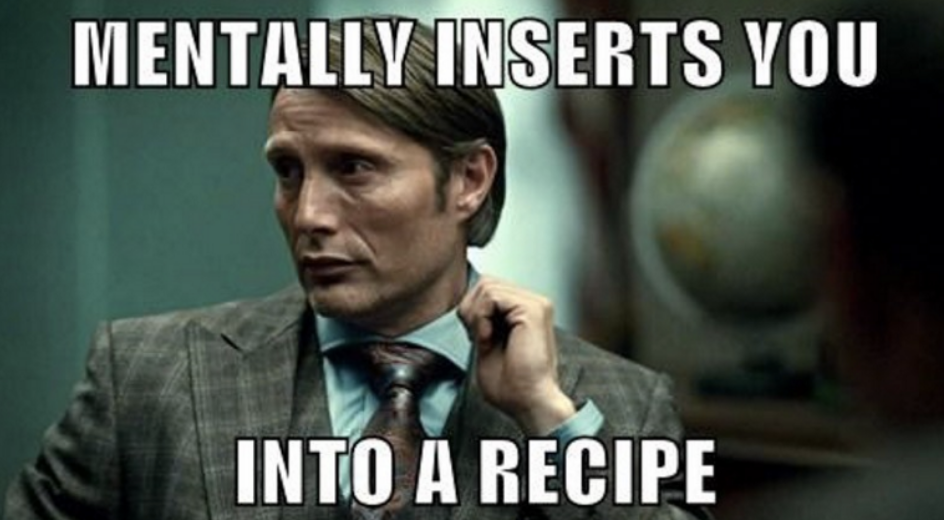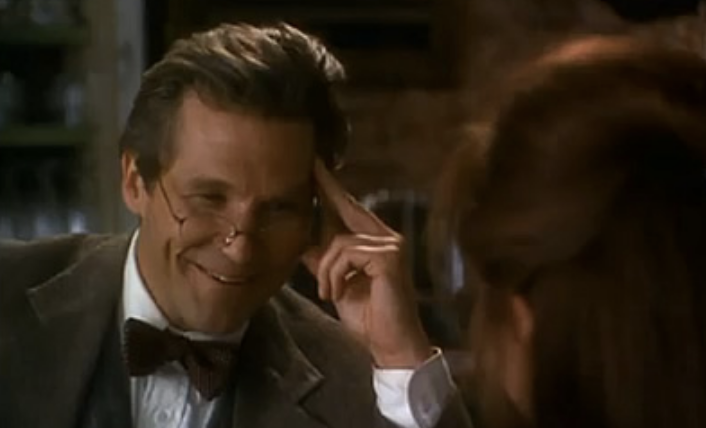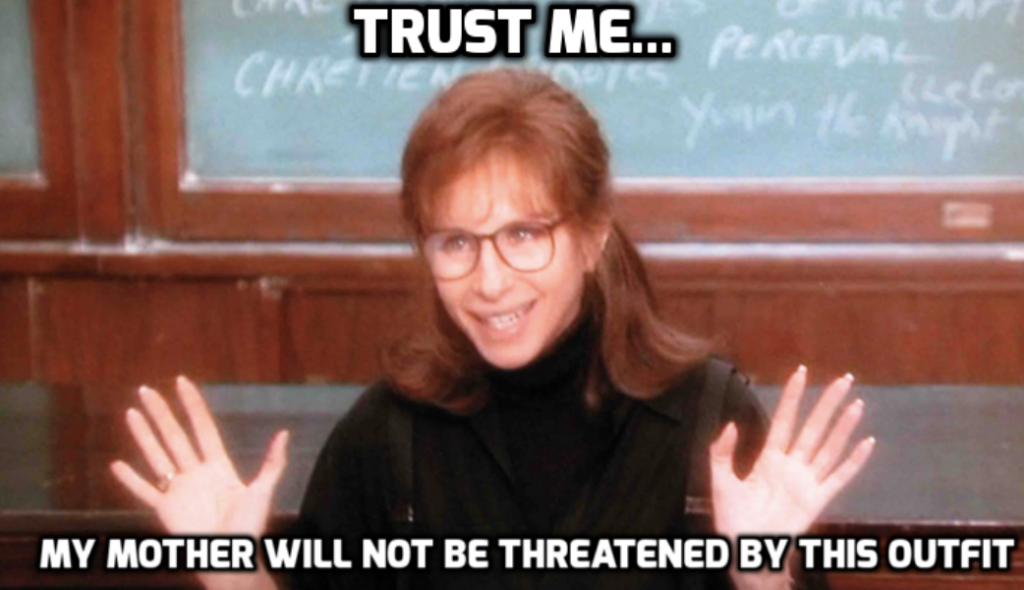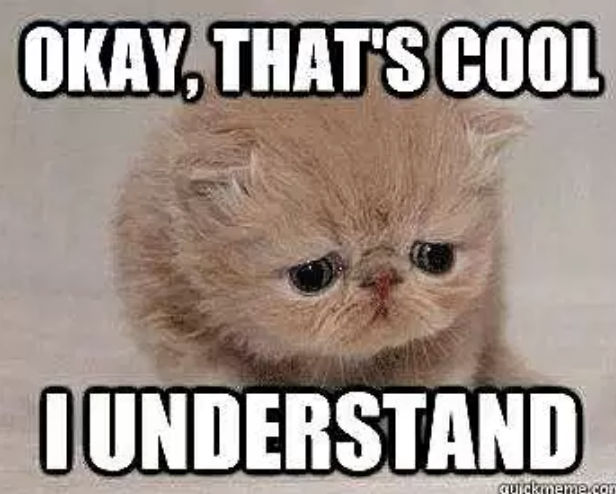
Every story begins with ideas. Alas, stories can only be created when at least two vastly different ideas collide. The place where these ideas meet is the BOOM, much like the weather.
Storms erupt because two very different bodies of air meet…and don’t get along.
Only one idea, however, can win. In the meantime, lots of metaphorical rain, lightning strikes and maybe some tornadoes. After the powerful storms, the landscape is altered, lives are changed, some even lost.
It’s the same with powerful stories. Yet, instead of weather fronts colliding, differing ideas are colliding.
It’s wonderful to have a great story idea. Alas, an idea alone is not enough. It’s a solid start but that’s all. Loads of people have ‘great ideas’ and that and five bucks will get them a half-foam latte at Starbucks…one day when it reopens.
Ideas are everywhere…especially now *sighs*
What differentiates the author from the amateur is taking the time to understand—fundamentally—how to take that idea and craft it, piece by piece, into a great story readers love.
Rolling It BACK
I’ve not been blogging for a while because I had pneumonia that—for whatever reason—would NOT GO AWAY and finally has after four months of being bedridden…just in time for a global pandemic.
Oh-kay.
Everyone is now learning social distancing. As a professional writer for almost twenty years… welcome to my life. So *waves* 😀
For everyone who’s said this to me (or another author), “I’ve always wanted to write a book, if only I could find the time.” Here you ARE! No time like the present.
And I’m here to help you out. I am back posting. There is no sense talking about industry stuff and I want a break from doom and gloom. We are going to get back to the craft essentials and have a good time.
So for all y’all (yes, I am a Texan) who’ve ever had a GREAT IDEA and no friggin’ clue how to turn that sucker into a story?
We begin our adventure here. Fiction, stories are essentially a clash of ideas….
Building Ideas into Stories

To have a story we must have what I call a BBT (Big Boss Troublemaker), since the word ‘antagonist’ confused the bejeezus out of me. We will discuss this concept more on another post.
Suffice to say for now, the BBT is the core idea/person/entity that creates the central problem that must be resolved by the end of your story,
Whenever we discuss the BBT, however, I show how all BBTs are an IDEA. This IDEA might manifest as a villain or as a core antagonist.
The core antagonist is only different from a villain in that this person’s goal is not inherently destructive, evil or nefarious.
Their idea(s) simply conflicts with what the protagonist’s idea(s) and what the MC believes he/she desires.
This antagonist generates a core story problem BIG enough to shove the protagonist out of the comfort zone and into the crucible.
This pressure (problems) creates heat which is the catalyst that creates the cascading internal reaction which will fundamentally alter the protagonist.
These internal changes are necessary for victory over the story problem via external action (choices/decisions). The MC cannot morph into a hero/heroine carrying emotional baggage, false beliefs, or character flaws present in the beginning. Why?
Because these elements are precisely WHY the MC would fail if forced to battle the BBT head-on in the opening of the story.
The story problem, and what it creates, is like a chemical reaction. Our protagonist, by Act Three should transform into something intrinsically different…a hero/heroine (a shining star instead of a nebulous body of gas).
The problem should be big enough that only a hero/heroine is capable of victory.
Villains as BBT

Villains are fantastic and make some of the most memorable characters in fiction whether on the page, stage or screen (Joker, Buffalo Bill, IT, Dr. Moriarty, Cersie Lannister, etc.).
A common misperception, however, is villains are ‘easy’ to write. No, mustache-twirling caricatures are easy to write. But villains, villains that get under our skin, who poke and prod at tender places take a lot of preparation and skill.
Dr. Hannibal Lecter is extremely dimensional. We, the audience, are conflicted because he’s horrible, grotesque, cruel… and suddenly we find ourselves rooting for him.
That seriously messes with our heads.
Dr. Lecter has an IDEA of polite society. Act like a proper human and be treated like one. His IDEA of what a human is entails all that separates us from animals, namely manners and self-control. Act like a beast, and beasts–>food.
This cannot help but conflict with any FBI agent’s duty to protect all lives (deserving or not), and help mete out justice in all homicides (even of those horrible folks we’re all secretly happy Hannibal made into a rump roast).
Hannibal also challenges the almost universal taboo against cannibalism, the idea that humans are not food.
All I can think is thank GOD Lecter is fictional or these jack@$$es hoarding TP might be in serious trouble right now.
…just sayin’.
Anyway….
Black & White is BORING FICTION

Superb characters are never black and white, wholly right or wrong because that’s an inaccurate reflection of humanity.
We (the audience) sense the falseness of such a simplistic character, and, while one-dimensional characters (villains included) can be amusing for a time, they’re not the sort of character that can capture an audience’s attention in a glutted market. Forget withstanding the test of time.
Caricatures don’t possess enough substance/dimension/gray areas to elicit heated debate and discussion among fans for years to come. Moriarty, Dracula, Frankenstein, Cercei Lannister, Joker, Darth Vader, Lestat, every serial killer EVER will continue to inspire debate until the meteor strike simply because there are no simple answers with any of them.
But villains are not ideal for all stories or all genres.
Core Antagonist as BBT

There are what people call character-driven stories which don’t require a villain. I twitch when I hear the term ‘character-driven’ because too many mistake this as a pass for having to plot. NOPE. We still need a plot ;).
Plot is what will drive the character change.
I’ve used the examples Steel Magnolias and Joy Luck Club in other posts so we’ll pick a different one today. The Mirror Has Two Faces is one of my favorite examples.
***And now y’all are stuck at home and can actually have time to watch this old movie 😛 .
The BBT in this story is the IDEA that physical beauty is bad. This IDEA is manifested in the story problem, which is created by Professor Gregory Larkin. He believes he knows why he’s always been unlucky in love.

Being an analytical Mathematics teacher at Columbia he gets a bright idea. He believes superficial attraction and sex is what has ruined all his relationships (and is partially correct).
He theorizes that physical attractiveness always undermines authentic intimacy. Thus, he postulates a solution. Find and date a woman he finds completely physically unappealing. Then he’ll find true love (Story Problem).
Enter in Professor Rose Morgan, a shy, plain, middle-aged professor who teaches literature also at Columbia. Ah, but Rose also happens to have a stunning older sister and a mother who was model-gorgeous in her heyday, a mother who always has to be the center of attention.
Gregory Larkin has the IDEA he can only find love so long as physical beauty is not part of the equation. Physical attraction only leads to a bad ending.
Close, but No Cigar

Rose Morgan also has her own idea about beauty, though is not actively aware of it initially. Her mother’s obsession with her own beauty has propelled Rose to demur and become a wallflower. She dresses in frumpy clothes, wears no makeup, doesn’t exercise and does nothing with her hair.
Namely, she doesn’t want to compete with Mom. Mom’s distorted overvaluation of physical beauty has created an equally distorted devaluation of physical beauty in Rose.
When Larkin asks Rose out and the relationship blooms enough for them to marry, it seems his theory is sound. Rose wants to believe she’s okay with this. That she is okay that she was picked because she was utterly unattractive on the outside.
Sure, it stings, but in the end, does it matter? They are close, share similar interests, enjoy each other’s company and she’s no longer terminally single.
Only once married, does Rose realize she’s sold herself short in a big way.
She didn’t believe she longed for Puccini and romance and lust and for a man (her husband) to want her. That was for ‘pretty girls’ and she was lucky to even be picked at all. Right?
Right?
Wrong

One night, Rose presses Gregory for sexual intimacy and he freaks out. He rejects her advances, and is angry at her for upsetting his tidy formula for lasting love.
This crushes Rose.
Rose believes she repulses him, but is very wrong. He did want her, probably more than any woman ever before. Yet, he still clings to his false IDEA. He remains undeterred that physical attraction/relations will ruin true love. He leaves right after this disastrous night for a lengthy lecture tour.
Rose finally faces her fear of being pretty and her false beliefs and ideas that she a) is not pretty and b) does not deserve to be pretty. She cleans up her diet, gets her hair done, changes her wardrobe and wears makeup. She feels differently and notes others treat her differently, too.
Gregory also does some soul-searching and starts pondering his IDEA might be wrong. Maybe outer beauty does not instantly negate inner beauty. Perhaps beauty, physical attraction, lust wasn’t the problem. He was.
Maybe.
Idea Showdown

Gregory returns to NYC and sees Rose has bloomed. She’s a very different wife inside and out. Not only is she stunning, but she’s now confident and knows what she wants, what she deserves.
She apologizes for her part in the problem. Confesses she never should have agreed to a passionless marriage. Rose thanks him for helping her see her own cowardice, but in truth she wants passion and Puccini, love and sex and more than marriage melba toast.
Gregory is dumped…again.
This forces him to take a hard look at himself and his ‘theory.’ He’s forced to choose between his ‘flawless theory of perfect love’ or Rose.
Will he let Rose dump him and go in search of an even more physically unattractive female? Or will he ditch his theory and woo Rose back?
Ideas as Weather Fronts

What happens when a cold front meets with a hot front? A STORM! Same in stories. This is why it’s critical to understand the BBT’s idea and the proxy carrying out the idea. It’s why it’s just as vital to understand the protagonist and his or her IDEA to be challenged.
Like in weather the colder and drier the cold front and the hotter and moister the hot front, the bigger the BOOM.
Thus once you’ve selected the IDEAS that will clash and what sort of characters will serve as the delivery mechanisms, make sure to choose who will suffer/change the most. The higher the stakes the better the story.
Also ask (for both sides):
What does he/she want? Why does he/she want it? Why now? What happens if he/she fails to get what they want?
When we articulate these and craft these ahead of time, we can make sure to pack as much punch into the plot as possible. No reader wants to invest 12-15 hours into a story where there are low stakes or no stakes. Where no one changes. ZZZZZZ.
Y’all might laugh, but I’ve edited many a work with no stakes. When I asked the writer, ‘What happens if she doesn’t find out the secret?’ Usually, I got, ‘She um…just doesn’t?’
Nope. That isn’t a story, it’s a sedative.
So write like the wind! The world has gone bonkers and remember, in fiction, it’s legal to kill the people who take all the toilet paper.
Lots of love and see you next time 😉








13 comments
6 pings
Skip to comment form
So glad thta you are better and you bounced back big time with a great post !
I do like The Mirror Has Two Faces.I, too , had abeautiful mother (nowhere near like Bacall in action, though), and a sister, who by everyone’s account, was the beauty of the family.The odd thing was that we were often asked if we were twins, (she’s 7 years older than I am) and often mistaken for each other, yet there it was. I will not go into my trials and by becomeng self-aware,(or not),but it is a movie which I woned on VHS tpe andn loaned around to other sisters of vain/beautiful women.
I pray that you stay well.
Now that school is essentially finished for me (until hopefully the fall), I am contemplating the idea of writing fiction again. This post is what I needed to help me focus on the story problem since so far all I have is a vague concept.
So pleased that you’re recovering, Kristen?. You are truly unique. Love this latest blog. Stay safe and well:)
Kristen, so glad you are finally feeling better. Great post on going big for the story problem. Loved it.
How have I never heard of that movie before? I will definitely check it out.
Great analysis and examples used from The Mirror Has Two Faces. Also one of my favorite movies which I still have on VHS tape…
Be well!
It’s great to see you back! Thanks for a wonderfully entertaining and informative post, as always!
Glad to hear you’re feeling better.
Still having trouble with my story, even after the talk we had two years ago. (Good Lord! Was it really that long ago?) Anyway, this was a nice kickstarter and reminded me to ASK THOSE QUESTIONS. You know, the ones I was never able to satisfactorily answer before. Still struggling, my friend. Still struggling. *sigh*
I’m confused. You’re a professional writer. Why do you start a new paragraph with each sentence (or every other sentence at most)? Why don’t you organize your essay into coherent paragraphs? Seems to me that paragraphs exist to give coherence and structure to an essay. These one/two sentence paragraphs are disruptive to read–almost like a piece of music where there’s a pause after every measure. There should be a new paragraph when there’s a new idea, a new topic sentence (to go back to English 101). It’s disruptive when, in effect, each sentence is a new topic sentence.
(Of course you’re not alone in doing this. But maybe you can explain the rationale for doing it.)
Author
I break up the content to have a lot of what we call ‘white space’ because most people read blogs on their phones. If I wrote these posts and structured them according to English 101 it would make for huge blocks of text and it would be very hard on the eyes.
Breaking up the passages into rarely more than three sentences at a time makes it where readers don’t go blind trying to read my posts.
It also has to do with how search engines work. We write to the SEO not for an A on an essay. As you mentioned I am a professional writer. There are all sorts of writers and writing forms.
Blogging is a unique form of writing. Like haiku has different structural rules than a limerick. Blogs are written to sound as if you are having a conversation. They also have to be structured in a way that the algorithms and web crawlers ping your content.
And, since I have been blogging now for almost fourteen years, safe to say I’ve tried just about everything. Seen what works and what doesn’t. Mostly, it is to make it easy on YOUR eyes 😉 .
I hope this helps answer your question.
I always enjoy your posts and your thoughts often echo my own when writing and plot building but in this case I have to disagree with you in a small, minor way. Often it is worthwhile including a simple black or white character as a foil for all the major characters to work around. Dickens, FMA de Voltaire, Oscar Wilde and many other great writers (including many modern authors) have used this schadenfreude as a centre for others to expand from.
Author
Well no we don’t really disagree. That is just another blog altogether. You still are using the one-dimensional character as a foil, meaning that character is being used as a device. It’s just another—and far more advanced—lesson. These posts are going to progress in levels of difficulty. Meaning a lot of new writers don’t even get the essentials of what a story IS. I see it all the time in pages that I edit. It’s far more than prose and pretty words and stuff happening.
Since we are in quarantine, I am starting with basics and working my way up from there to the more difficult stuff.
Alas, if a new writer doesn’t first understand that two ideas meet and only one can win? Then they don’t have a story. The fancy shadenfreude stuff can only come after we understand the basics. And, by the way, thanks for the reminder on that. I’ll add this to the blog list and address this topic.
[…] https://authorkristenlamb.com/?p=28157 […]
[…] Big craft elements are sometimes difficult for writers to get their minds around. Lucy V. Hay explains why all writers need a structural toolbox, Frank McCourt discusses telling the underlying story, Joseph Scapellato talks about story shape, and Kristen Lamb sees the collision of powerful ideas at the center of all great stories. […]
[…] Continue Reading Here […]
[…] bounce back – I always do. Meanwhile, if you’re thinking of writing That Book, Kristen Lamb is back and she’s going to help you doing it! ? Or you can take an online course or finally do That Thing you’ve always wanted to do, […]
[…] Ideas Collide: Powerful Storms are the Center of All Great Stories […]
[…] of all, if you go back and read my previous two posts on the Big Boss Troublemaker Ideas Collide: Powerful Storms at the Center of All Great Stories and The BBT: Meet the Big Boss Troublemaker, the Brain Behind All Stories you’ll see why I […]